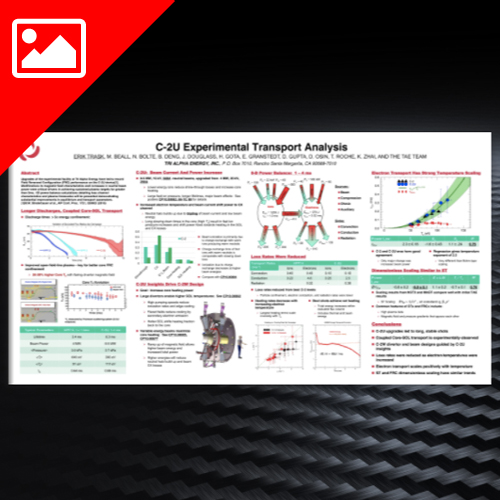
C-2U Experimental Transport Analysis
October 2016 | Erik Trask | APS-DPP | Poster
Upgrades of the experimental facility at TAE Technologies have led to record Field Reversed Configuration (FRC) performance on the C-2U device.

October 2016 | Erik Trask | APS-DPP | Poster
Upgrades of the experimental facility at TAE Technologies have led to record Field Reversed Configuration (FRC) performance on the C-2U device.
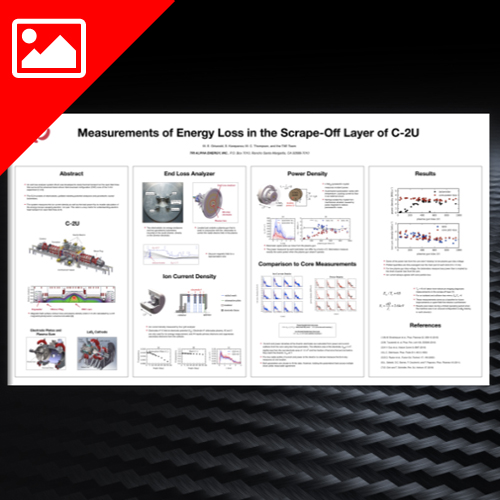
October 2016 | M.E. Griswold | APS-DPP | Poster
An end loss analyzer system (ELA) was developed to study thermal transport on the open field lines that surround the advanced beam-driven field-reversed configuration (FRC) core of the C-2U experiment.
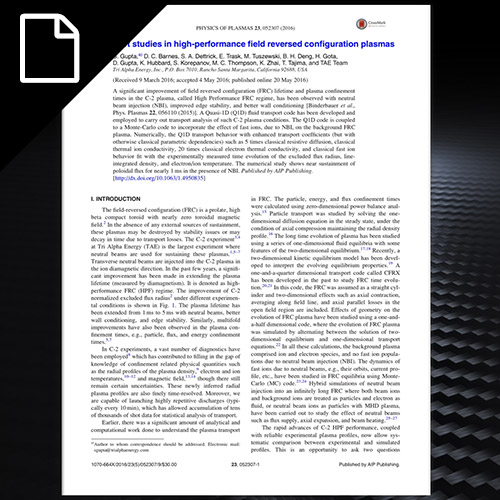
May 2016 | S. Gupta | Physics of Plasmas | Paper
A significant improvement of field reversed configuration (FRC) lifetime and plasma confinement times in the C-2 plasma, called High Performance FRC regime, has been observed with neutral beam injection (NBI), improved edge stability, and better wall conditioning.
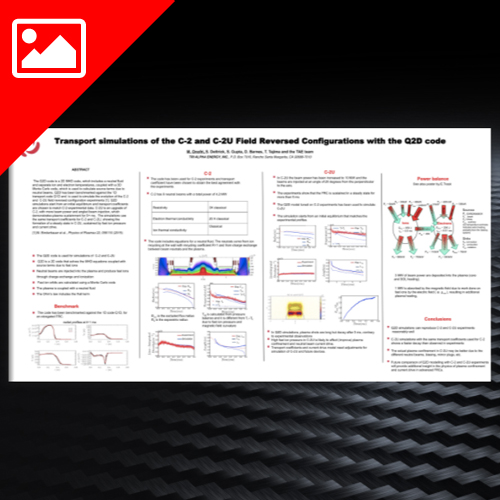
April 2016 | Marco Onofri | Sherwood | Poster
The Q2D code is a 2D MHD code, which includes a neutral fluid and separate ion and electron temperatures, coupled with a 3D Monte Carlo code, which is used to calculate source terms due to neutral beams.
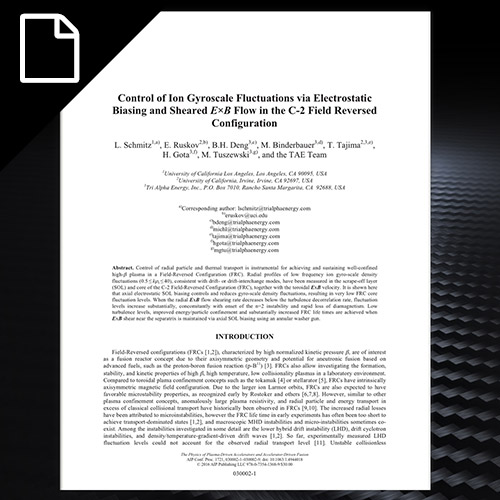
March 2016 | L. Schmitz | AIP Conference Proceedings | Paper
Control of radial particle and thermal transport is instrumental for achieving and sustaining well-confined high-β plasma in a Field-Reversed Configuration (FRC). Radial profiles of low frequency ion gyro-scale density fluctuations (0.5 ≤ kρs ≤ 40), consistent with drift- or drift-interchange modes, have been measured in the scrape-off layer (SOL) and core of the C-2 Field-Reversed Configuration (FRC), together with the toroidal ExB velocity.
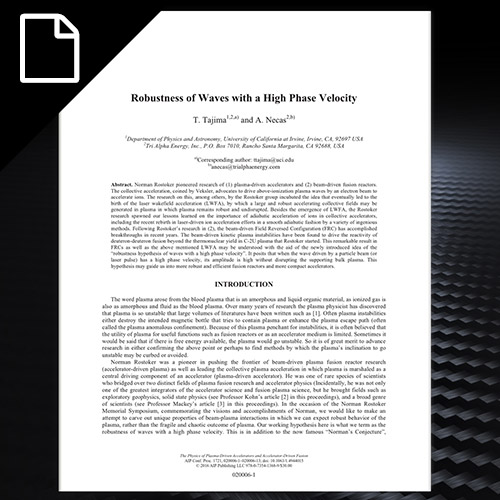
March 2016 | T. Tajima | AIP Conference Proceedings | Paper
Norman Rostoker pioneered research of (1) plasma-driven accelerators and (2) beam-driven fusion reactors. The collective acceleration, coined by Veksler, advocates to drive above-ionization plasma waves by an electron beam to accelerate ions. The research on this, among others, by the Rostoker group incubated the idea that eventually led to the birth of the laser wakefield acceleration (LWFA), by which a large and robust accelerating collective fields may be generated in plasma in which plasma remains robust and undisrupted.